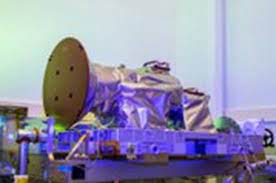Atmospheric Waves Experiment : NASA

NASA is set to launch the Atmospheric Waves Experiment (AWE) to study ‘airglow’ to understand space weather.
- Atmospheric Waves Experiment (AWE) is a first-of-its-kind NASA experimental attempt aimed at studying the interactions between terrestrial and space weather.
- It is planned under NASA’s Heliophysics Explorers Programme.
- This mission will study the links between how waves in the lower layers of the atmosphere impact the upper atmosphere and, thus, space weather.
- It will be launched and mounted on the exterior of the Earth-orbiting International Space Station (ISS).
- It will look down at the Earth and record the colourful light bands, commonly known as airglow.
- The new NASA mission will try to understand the combination of forces that drive the Space weather in the upper atmosphere.
- It will measure the airglow at mesopause (about 85 to 87 km above the Earth’s surface), where the atmospheric temperatures dip to minus 100 degrees Celsius.
- At this altitude, it is possible to capture the faint airglow in the infrared bandwidth, which appears to be the brightest, enabling easy detection.
- It will be able to resolve waves at finer horizontal scales than what satellites can usually see at those altitudes, which is part of what makes the mission unique.
- The health of the ionosphere, whose lower layers sit at the edge of space, is important for maintaining seamless communication.




